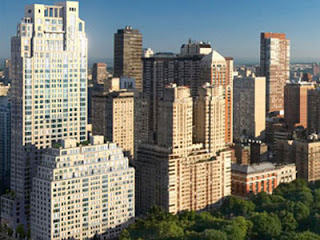If you have always lusted
after the enviable status of those who reside in the epicenter of culture,
dining and society, there is no better time to invest in a New York coop than
now. Historically, renting in Manhattan has been exponentially more affordable
than buying. While renting has always offered the benefit of lower monthly
payments and less maintenance worries, the gap between renting and buying in
Manhattan is beginning to
narrow.
Current Housing Trends
Rent for an apartment in Manhattan is now at an all-time high, averaging upwards of $3,438 a month. The market is competitive for buyers due to an increased demand. Landlords have responded by offering fewer perks that were once a given for apartment renters. As rent fees go up, as much as 16% within a year, the price of ownership remains steady. Depending on renting variables such as funds available for a down payment, interest and loan terms, buying may now be slightly more affordable.
Other Variables
A simple comparison between the monthly costs of rent versus a mortgage can be somewhat misleading. While rent prices can climb, property taxes are still a variable in home ownership. The maintenance and upkeep of a home can also be a significant cost in terms of time and money. While rent prices in Manhattan are causing many to consider the benefits of buying a New York coop, qualifying for a mortgage has never been more difficult. Some purchases require a down payment of 35%. A down payment of that size is certainly an investment, and one that will only pay off over the long term, which has a deterring effect on house flippers.
What’s the Best Option For Me?
You may be asking yourself if owning a New York coop is the right decision for you. While real estate and financial planning experts both have arguments for and against buying, purchasing property is a personal decision. While the good real estate bargains and historically low interests rates of today’s market may be tantalizing incentives, you should probably consider if the investment fits your personal lifestyle. For example, if you’re looking for more personal ownership and independence, make sure you understand how the coop or condominium association operates. There are still many ways in which a condo association or a coop board can place restrictions upon your personal living preferences. You may want to become familiar with the history of coops and condos in the New York metro area. It is also important to consider if you are planning on committing to a purchase; many financial planners state that you should plan to live in a purchase for at least the next five years in order to make the investment worthwhile. Also, while some argue that property in Manhattan is a good investment, it is still an investment and that comes with a certain amount of risk.
For those pondering the purchase of a New York coop, it seems that market conditions are somewhat favorable towards buying over renting. However, that doesn’t mean that everyone should jump on the real estate bandwagon. Yet if you are one of those astute and financially savvy individuals that has been eyeing property in Manhattan but have been waiting for the right opportunity, then perhaps now is the time to make the jump.



